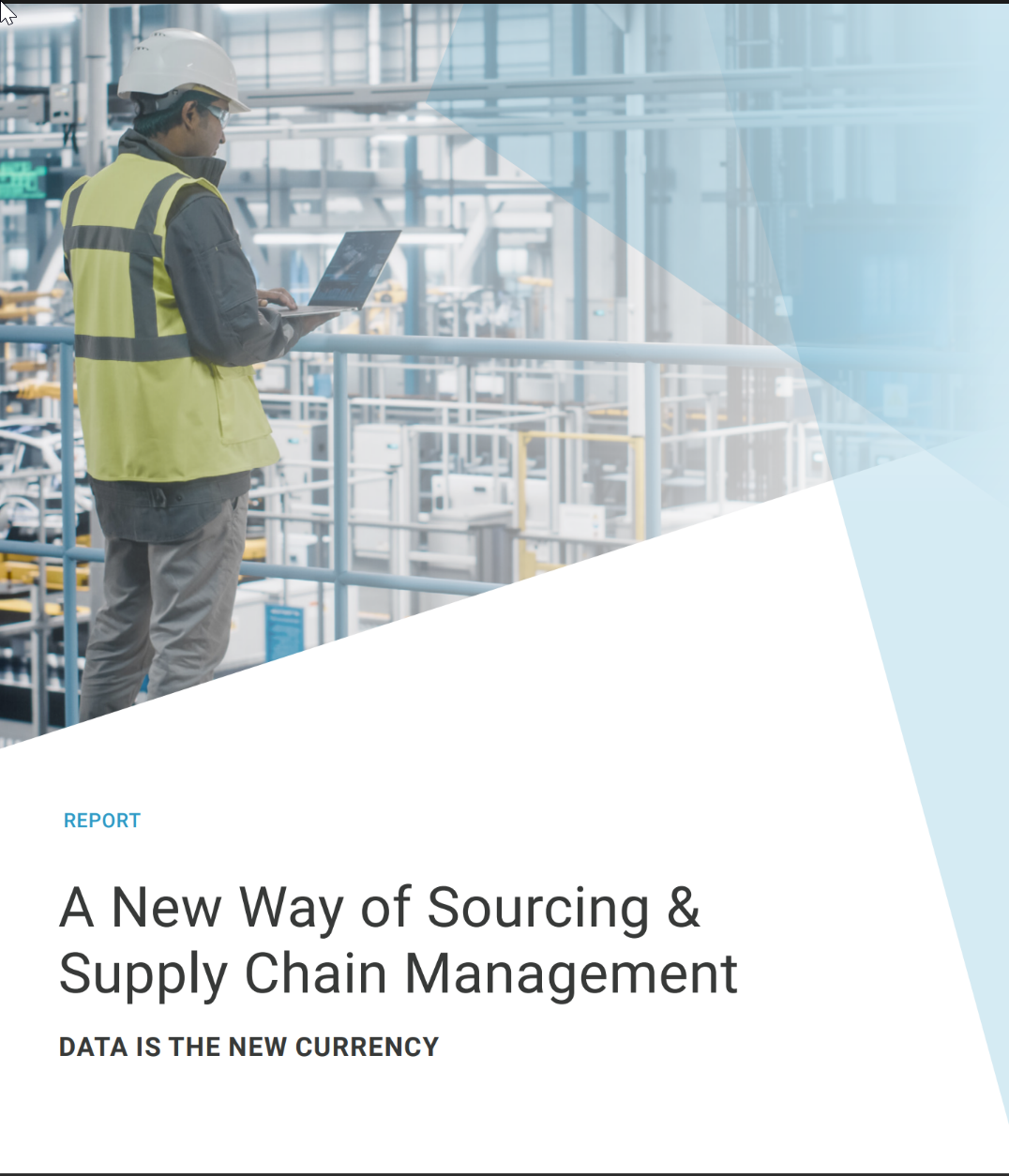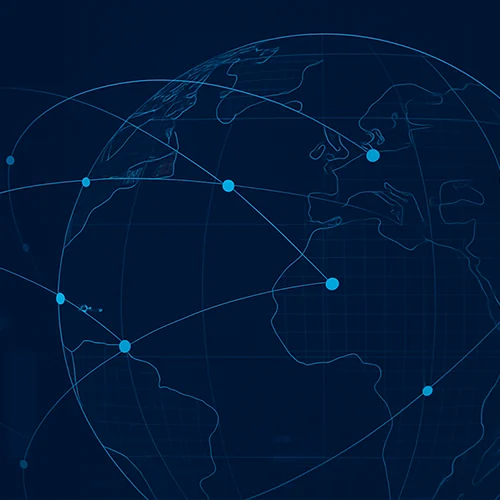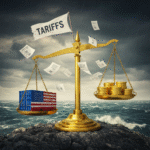The Collapse of Maritime Shipping Leading to Global Supply Chain Issues
Key Takeaways:
- Recent developments in the Baltic, Mediterranean, and Red Seas point to a fragile maritime supply chain
- The global trade system depends on the U.S. Navy to provide security for commercial freighters throughout the world. However, with fewer naval ships built, there are fewer to police dangerous trade routes such as the Red and Mediterranean Seas
- Those industries that could feel the greatest impact from a maritime shipping collapse are manufacturing, agriculture, and energy, according to geopolitical expert Peter Zeihan
- Digital sourcing, procurement, and costing solutions like aPriori can help mitigate potential supply chain disruptions
The Full Article:
We don’t have to look back many years to identify maritime supply chain issues. One example is the blockage of the Suez Canal in 2021, which created shipping issues in the Cape of Good Hope. Other global supply chain disruptions include the COVID-19 pandemic and the long shutdown in Asia, leading to material shortages such as semiconductors. Supply chain issues create a domino effect and are indicative of its transportation system vulnerabilities.
In late December 2024, geopolitical expert and author Peter Zeihan released a video titled “Playing Jenga with Maritime Shipping.” In it, he discusses three global regions impacted by disruptions and the potential supply chain issues. Here’s a brief summary of Mr. Zeihan’s perspective:
- A Ship Sinks A Russian Nuclear Ice Breaker in The Making
The Russian cargo ship Ursa Major sank in the Mediterranean. The Russian Foreign Ministry said it was an “act of terrorism” after a series of explosions with one occurring in the engine room before sinking.
The ship’s deck carried two giant port cranes with their loading buckets, two heavy hatch covers for ice-breaking vessels, 129 empty containers, and a 20-foot container with roofing equipment. It had been headed to the Russian far-eastern port of Vladivostok and was going to move Russian forces through the Mediterranean from Syria after the Assad regime fell.
Russia’s future nuclear ice breaker, which should have been operational at the time of this sinking, will likely never be built. Without the necessary specialty parts that were onboard the sunken Ursa Major and the sanctions that prevented them from moving or buying replacement parts, the Russians wouldn’t be able to build it. This would likely accelerate the already bare-bones Russian merchant marine.
- The Houthis Disrupt More Than Israel
Israel’s Prime Minister Benjamin Netanyahu announced a broader assault against the Houthis. This Islamic militant group is supported by Iran, which has been providing them with weapons over the last 15 years. Their goal is to destabilize the region. However, Iran views them as an eminently disposable ally or proxy. Despite their ineffective attacks, the Houthis know how to operate most of the equipment that launches a weapon. Consequently, they have disrupted population centers and Saudi Arabian facilities and committed light piracy in Israeli waters, becoming a strategic nuisance for the neighboring countries. Their presence makes peace impossible in the Yemen region.
With Israel working to stave off the Houthis and the downfall of Syria, Hezbollah, and Lebanon, Hamas has been put “in a box”, unable to expand geographically. Zeihan believes the Houthis could potentially interrupt the weapons flow by attacking ships to supply the weapons system.
- Finland Impounds The First Ship of the Russian Shadow Fleet
In late December 2024, Finland impounded the Russian Shadow Fleet’s first ship. Zeihan notes an uptick in the number of Russian ships operating in the Baltic Sea, either directly or through a third party like China. The goal of these ships is to drag their anchors to sever Northern Baltic subsea infrastructure, particularly those that transmit data and electricity to Finland, Sweden, Estonia, Latvia, and Lithuania.
Russia has committed such sabotage in the past. The Scandinavians, Baltics, and Nordics are more vigilant in monitoring this infrastructure now.
This is a multi-vector challenge to the naval order that allows international trade to occur —Peter Zeihan
The Upside of Globalization
Anyone, anywhere, can interface with any partner to access any commodity or product, engendering global trade as we know it and the expansion of economic sectors that were not possible before.
He uses the example of oil. Over half of all internationally traded oil sails on long-haul ships. If you are transporting it from the Persian Gulf to the East Coast, you can do so without concern about your cargo encountering a problem. The U.S. Navy monitors and ensures that these waters are safe for passage. On the other hand, though not a likely occurrence, you can buy insurance against potential losses should there be problems transporting it.
The same is true for food production. Roughly a third of all food production globally is shipped in a similar fashion and with a comparable insurance practice. He says this setup is responsible for the very existence of the manufacturing industry.
This ability to move through international waters with this frequency would not be possible with a peaceable international system.
The Fate of the Peaceable International System
But what happens when there are disruptions to that peaceable system? It could be the Russians turning the Black Sea into a “no-go zone”. Ukraine going after Russian shippers in that space. The Baltics and Nordics, and most notably, Finland, impounding a tanker trying to evade sanctions. In the Middle East, after the fall of Syria and Hezbollah, the Israelis are going after the Houthis to disrupt their weapons runs, creating further disruption of shipping routes in that region.
In his book, The End of the World Is Just the Beginning, Zeihan discusses how maritime industry disruptions will end globalization.
The maritime order is based on trust—that your order will get there, that the U.S. will enforce the ceilings, and that no one will break that trust and order. Now, we have situations that are stress-testing it.
The three scenarios above show the unpredictability and fragility of this maritime transport system. If it breaks down, insurance companies will be stretched, and shipping will collapse. Zeihan predicts U.S. manufacturing will be the sector to feel it first, and then energy and agriculture.
A Critical Supply Chain Crossroads
We are now at a critical crossroads. Whichever way it goes, Russia is likely to have a key role, especially if it loses its ability to maintain its icebreaker fleet. Then they lose a strategic channel – the Artic route. If that’s the case, Zeihan theorizes, it could provide a vested interest for them to further challenge the system.
He concludes that this system has been in a strange holding pattern for a few years. The U.S. has not appeared to have an interest in or ability to maintain the global order. Other countries, including U.S. rivals, are challenging the system. They assume the U.S. will keep order and peace so they can pursue their own self-interests.
Zeihan believes the whole system, including maritime trade and the global economy, could collapse. He believes regional powers will guarantee regional security, resulting in regional and national trade systems. It could make long-haul, multi-continental shipping, which has dominated manufacturing, agriculture, and energy since 1950, a thing of the past.
What will tip the scale that breaks the whole system? What will the future of manufacturing be?
Navigating Supply Chain Disruptions with Greater Agility
There is no certainty in the supply chain. However, there are several measures manufacturers can take to mitigate disruptions. Take a look at a few of the issues and how aPriori helps manufacturers address them:
- Tariffs: Navigate 2025 Manufacturing Tariffs with Strategic Sourcing
- Inflation: Hear how TE Connectivity tracks, predicts, and improves both cost and sustainability in their supply chain using aPriori.
- Geopolitical Tensions: Watch aPriori Executive Advisory Board Member, Jody Markopoulos discuss how inflation, unemployment, trade tariffs, and geopolitical shifts are impacting supply chains, emphasizing the need for strategies to navigate these challenges.
- Supplier Negotiation: Learn how Thompson Aero Seating empowered their supplier negotiations with should costs
- Supply Chain Management: Watch how Woodward Uses aPriori for Supply Chain Capacity Planning
- Nearshoring & Labor: With a return to nearshoring, manufacturers must compensate for the skills gap. Find out the best strategies to overcome this hurdle.
AI-Powered Sourcing Insights for Supply Chain Risk Mitigation & Optimization
aPriori leverages AI to provide real-time sourcing insights, helping manufacturers anticipate and address potential supply chain disruptions. Manufacturers can perform cost analysis to identify and eliminate hidden costs early in product development.
Leveraging aPriori’s digital twins and supply chain automation, manufacturers can build more agile and responsive supply chains, mitigate tariff risks, optimize supplier selection, and uncover cost-saving opportunities.
Did You Know Data Is The New Currency?
Whether it’s a pandemic, geopolitical risks, or tariffs, the supply chain and your sourcing efforts could be disrupted. Accurate data is crucial to circumventing them.








